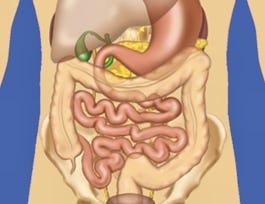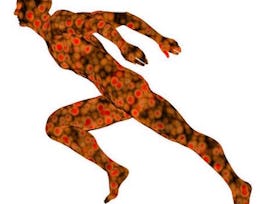The vital signs – heart rate, blood pressure, body temperature, respiration rate, and pain – communicate important information about the physiological status of the human body. In this six-part course we explore the anatomy and physiology underlying the vital signs so that you will develop a systematic, integrated understanding of how the body functions. Relevant body systems are reviewed including cardiovascular and respiratory, followed by explanations of how the function of these systems affects vital signs. We discuss normal ranges, normal variants, and the mechanisms that underlie changes in the objective measurement of vital signs. The course also includes demonstrations of appropriate techniques for measuring vital signs in yourself and others.


Vital Signs: Understanding What the Body Is Telling Us
Taught in English
Some content may not be translated
370,184 already enrolled
(6,185 reviews)
Skills you'll gain
Details to know

Add to your LinkedIn profile
6 quizzes
See how employees at top companies are mastering in-demand skills


Earn a career certificate
Add this credential to your LinkedIn profile, resume, or CV
Share it on social media and in your performance review

There are 6 modules in this course
This week we start our exploration of the vital signs with a look at the heart. We'll study the basic structure of the heart, think about how the heart pumps blood through the body, and learn how clinicians assess and think about heart rate and the pulse.
What's included
10 videos3 readings1 quiz
During week 2 we will learn about the anatomy of the blood vessels and how they function. You will have a better understanding of systolic and diastolic blood pressure, mean arterial pressure, and assessing blood pressure accurately.
What's included
6 videos3 readings1 quiz
This week we will explore metabolism. We will discuss anabolism and catabolism, basal metabolic rate, how the body generates heat. You will also have a better understanding of how health care providers assess metabolic rate.
What's included
5 videos3 readings1 quiz
During week 4 you will learn the definition of mean body temperature and how the body regulates temperature. We will discuss hypothermia and the difference between hyperthermia and fever. Lastly, you will learn how to assess body temperature.
What's included
5 videos3 readings1 quiz
This week we will learn about pulmonary anatomy, capillary gas exchange, and regulation of respiration. You will have a better understanding of how health care providers assess respiration rate and the quality of lung sounds.
What's included
8 videos3 readings1 quiz
This week we will explore the neurological pathways associated with pain, and the difference between pain tolerance and pain threshold. We will understand what pain is telling us and why accurately assessing and effectively managing pain are important. In addition, we will review how healthcare providers asses pain.
What's included
8 videos3 readings1 quiz
Instructor

Offered by
Recommended if you're interested in Patient Care

Duke University

Duke University

Universiteit Leiden

University of Colorado Boulder
Why people choose Coursera for their career




Learner reviews
Showing 3 of 6185
6,185 reviews
- 5 stars
86.07%
- 4 stars
11.80%
- 3 stars
1.46%
- 2 stars
0.27%
- 1 star
0.37%
New to Patient Care? Start here.

Open new doors with Coursera Plus
Unlimited access to 7,000+ world-class courses, hands-on projects, and job-ready certificate programs - all included in your subscription
Advance your career with an online degree
Earn a degree from world-class universities - 100% online
Join over 3,400 global companies that choose Coursera for Business
Upskill your employees to excel in the digital economy
Frequently asked questions
Yes! You can access the full course, including assessments and all videos, through the Audit track. Learners also have the option of earning Course Certificate by submitting all assignments for a grade and purchasing the course for $49. Financial aid is available.
Access to lectures and assignments depends on your type of enrollment. If you take a course in audit mode, you will be able to see most course materials for free. To access graded assignments and to earn a Certificate, you will need to purchase the Certificate experience, during or after your audit. If you don't see the audit option:
The course may not offer an audit option. You can try a Free Trial instead, or apply for Financial Aid.
The course may offer 'Full Course, No Certificate' instead. This option lets you see all course materials, submit required assessments, and get a final grade. This also means that you will not be able to purchase a Certificate experience.
When you purchase a Certificate you get access to all course materials, including graded assignments. Upon completing the course, your electronic Certificate will be added to your Accomplishments page - from there, you can print your Certificate or add it to your LinkedIn profile. If you only want to read and view the course content, you can audit the course for free.


